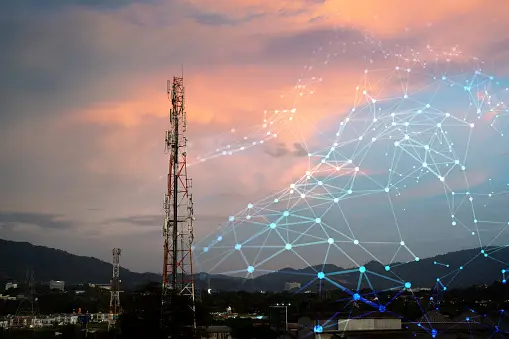

Satellite networks are essential for providing global communication, navigation and observation services.
As featured in Futuresparity this article looks at which satellite network can best benefit your business
But not all satellite choices are the same. Differing in altitude and orbit, as well as in price and latency, the various options present advantages and disadvantages according to the application you are talking about.
Satellite networks can be categorised into three main types: LEO, MEO and GEO.
First let’s take a look at Lower earth orbit (LEO), the newest kid on the block, and all about bringing faster and better performing internet connections to the masses. LEO satellites are the closest to Earth, orbiting at an altitude of up to 2,000 km. They have the lowest latency (time taken for a signal to travel from the ground to the satellite and back), generally of about 0.05 of a second.
The main players in this sector include SpaceX, OneWeb, Amazon and Telesat, all busy developing mega-constellations of thousands of satellites in a ‘space race’ to bring faster and better-performing internet connections to the masses. It is claimed that LEO constellations will inexpensively bridge the digital divide and provide internet access to remote and rural areas that may forever lack terrestrial infrastructure.
Developed by Elon Musk’s SpaceX initiative, Starlink’s growth, for example, has been nothing short of stellar. Within three years of commercial launch in 2019, it had put more than 4,000 new satellites into space, providing high-speed internet services to over 1.5 million customers in 50 countries worldwide. Media attention has been enormous.
A LEO security health warning
LEO networks look fine for low-cost domestic broadband and non-critical data applications, but when it comes to industry-specific constellations their capacity is limited.
But the biggest drawback of LEO constellations revolves around security. They present new opportunities for cyber criminals, since their services involve not just the physical satellite but also the ground station that effectively controls it. It is only a matter of time before attackers get up to speed with their methods and target LEO connectivity with greater intensity, going after traffic in space by targeting this Earth-based infrastructure. In fact, there is evidence that this is already happening. Take for example the cyberattack against the Viasat satellite system at the start of Russia’s full-scale invasion of Ukraine last year.
The rapid growth we’ve seen in the LEO sector has been enabled by lowered barriers to entry in the form of ‘off the shelf’ solutions, reduced launch costs and advances in technology. But the uncomfortable truth is that for all the talk of ‘space as a service’, this rapid expansion has also created an easier attack surface for the bad guys.
Although superficially attractive for business use cases, LEO does not have the security and dependability of the other choices where anything mission critical is involved.
So, if LEO is not a sound commercial choice for mission critical data or always-on networks what are other industry options businesses should consider?
Medium earth orbit (MEO)
MEO satellites orbit at altitudes of between 2,000 km and 20,000 km, lower than geostationary satellites but higher than LEO ones.
MEO satellites are best suited to industries with remote terrain where fibre connection is not possible such as marine, energy, commercial maritime, mining, and humanitarian relief operations.
Geosynchronous Equatorial Orbit (GEO)
GEO satellites orbit at an altitude of 35,786 km above the equator, where they match the rotation of the Earth. They have the highest capacity density and the lowest cost per bit of all satellite network options.
Geostationary satellites are very good for point-to-point and point-to-multipoint private closed networks because they have a fixed position relative to the Earth and can cover a large area with a single beam. This means that they can provide a stable and secure connection between two locations without the need for a vulnerable public internet connection or communal ground stations.
There are many applications for GEO networks where high reliability and secure communication are essential, like banking transactions, corporate connectivity, governmental and military operations and broadcasting, as well as disaster recovery first responder and tele-medicine uses.
Satcom as a managed service
Satcom delivered as a managed service is fast emerging as a valuable answer to the healthy competition being provided by Elon Musk.
Satcom as a managed service provides a model that enables businesses to stay connected without having to buy and build their own networks. This means that they can reduce the cost and burden of managing their own communication networks, while still enjoying the benefits of reliable and efficient connectivity. Satcom as a managed service delivers many benefits that maximise the potential of satcom infrastructure.
Simplification of management and support, increased flexibility and scalability, enhanced network performance, proactive monitoring, and cost-effectiveness are just some of the advantages of opting for a managed satcom service. By partnering with experienced service providers, businesses can enjoy reliable and efficient communications, enabling them to focus on their core operations while benefiting from the latest advancements in satellite technology.
As featured on Futuresparity.com



